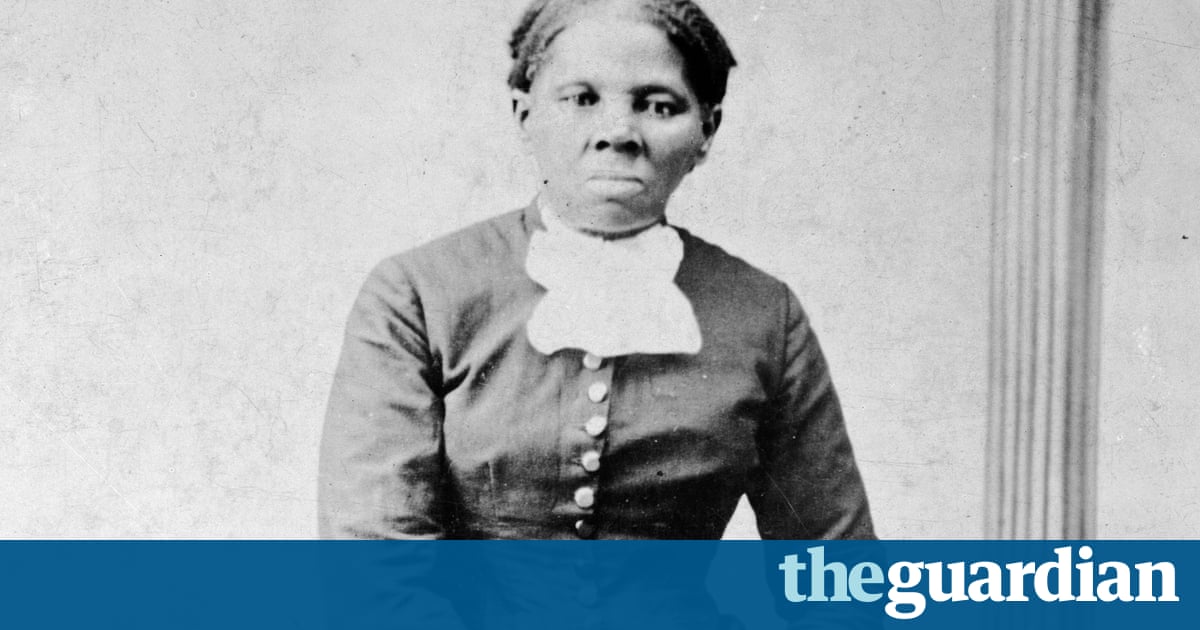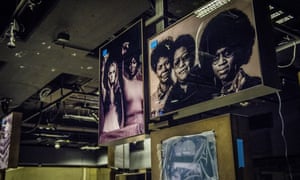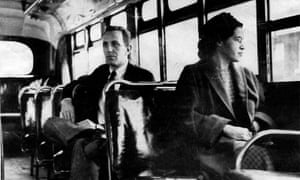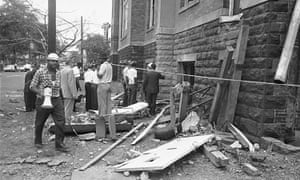From the attic to the Smithsonian: black history museum is full of ‘found’ items

When the National Museum of African and African American History and Culture opens in September it will house more than 35,000 artifacts, many of which were donated from the public or found in attics, basements and closets.

One morning in 2009, Lonnie G Bunch III took a phone call from Philadelphia historian Charles Leroy Blockson. Blockson is a well-known collector of African American literature, his Afro-American collection at Temple University, set up in the 1980s, houses 500,000 books, texts and other artifacts items the 82-year-old has accumulated over decades. He had called Bunch to let him know he had rare items that belonged to Harriet Tubman that he wanted to donate to the new Smithsonian museum, the last to be built on the National Mall.
I was convinced that that just wasnt true, recalls Bunch, founding director of the Smithsonians National Museum of African and African American History and Culture. I had been to her house in Mount Auburn, New York, and there were two artifacts.
Bunch headed north thinking hed get only a Philly cheesesteak out of the trip. But when the two met at Temple University, Blockson reached into a small box, and pulled out photographs of Tubmans funeral that Bunch had never seen. That got his attention. Then came a homemade knife and fork Tubman used to eat her meals. Finally, Blockson removed two items that caused a lump to form in Bunchs throat and left tears in his eyes. First was the silk shawl that Queen Victoria gave to Tubman 1897 as an invitation to the Diamond Jubilee.The second was Tubmans hymnal, a powerful reminder that even though she couldnt read, she kept close to her heart the songs that not only moved her spirit, but also helped guide slaves toward the northern US and Canada toward freedom.

We were both crying, says Bunch. Then he said: Your museum is a place where the public can remember and learn, so I want to give these to you. His generosity was emblematic of the kind of generosity that we hit over and over again in this country.
When the National Museum of African and African American History and Culture opens on 24 September, visitors will see thousands of artifacts organized across more than a dozen exhibits. But those items represent 10 years of work by museum curators scouring the US, searching attics, basements and boxes, receiving some donations from people like Blockson, while reassuring countless others that the items they have stored in closets for years will be preserved by the Smithsonian and, eventually, become parts of a public story about the history of black America.
We have to talk about how our closet is a different type of closet, and what it means moving something from a familys legacy to a nations legacy, says Michle Gates Moresi, curator of collections at the NMAAHC.
Bunch was no novice to the worlds of scholarship and museum administration when he became founding director of the NMAAHC in 2004. He had been president of the Chicago Historical Society, and before then he had already spent a decade as a curator and administrator in the Smithsonians National Museum of American History. When Bunch started, he had three staffers, including himself and Moresi, who came on as a junior curator in 2006. He had to raise $250m on his own, a sum that would be matched by congressional appropriations. There were no benefactors, no collections and no funds to buy anything. And he was now tasked with finding the artifacts to fill 380,000 square feet of space.
A growing museum staff of curators began contacting collectors, confident that some of them would have items that were a fit for the new museum. Other collectors reached out to museum staff themselves, which is how the NMAAHC ended up with its black fashion collection. The clothing was donated by Joyce A Bailey, whose mother, Lois Alexander-Lane, had founded the Black Fashion Museum in New York City.
The best place for the collection was the new museum, Bailey says. It needed to be some place where it would be cared for properly and where other people would be able to come and see portions of the collection and realize the centuries of contributions made by the women and men of the African diaspora.
Among the items donated from Bailey was the dress Rosa Parks was making when she was arrested for refusing to give up her seat on the bus. Getting items like this made the overall task of filling out future museum exhibits easier. But Bunch knew that more of the artifacts for the NMAAHC would come from people who werent diehard collectors.

Early in my career I remember doing collecting and people saying I dont have anything, Bunch says. Then you look in the trunk and theres great stuff. Our belief was there were a lot of people who were waiting to open those trunks.
So the museum put out a nationwide call in 2008 to let people know they were looking for contributions. Bunch and his curators hit the road, holding a series of treasures events in New York, Chicago, Detroit and about 10 other cities. Sometimes people came with donations, but it was more often the case that the connections made at an event would turn into a donation opportunity later on, and a chance for NMAAHC staff to explain what the Smithsonian could provide when it came to protecting items that, in some cases, werent only pieces of a collective black history, but also important articles of individual families histories.
I didnt realize it at the time, but my mom was a pioneer, says Donna Limerick, who had met Moresi and gotten her contact information at one of the early treasures events.
Limericks mother is 103-year-old Mae Reeves, a longtime Philadelphia milliner who owned two ladies hat shops. Reeves opened her first hat shop in 1944, and made choice hats of velvet, feathers, and ribbons for some of the most prominent female singers of the 20th century, including Lena Horne, Ella Fitzgerald and Marian Anderson. When she retired from hat-making in 2003, her last remaining store lay dormant until 2009, when the roof began leaking. Thats when Limerick finally gave Moresi a call.
Michle said: Donna, Ive been waiting to hear from you, Limerick says. Once the museum got involved I didnt think of it as my moms hats. What shes given to the museum is a lost art form.
Museum curators found artifacts in other ways as well.
As a college student, Joan Mulholland had attended sit-ins and Freedom Rides organized by fellow undergraduates during the civil rights movement. She was 22 when she and several friends drove to Birmingham, Alabama, in September 1963, just days after the bombing of the 16th Street Baptist church that killed four young black girls. On the ground were shards from the churchs glass windows that had been blasted apart by the explosion. Mulholland picked up as many as she could carry, and kept them in a box of her own artifacts from the civil rights movement.

Then, six years ago at the 50th anniversary conference commemorating the founding of the Student Nonviolent Coordinating Committee, she met a pair of curators from the new Smithsonian museum. Mulholland invited them to her house in Virginia to not only see the glass shards, but also the other relics from the civil rights era she had kept, such as notices of student protest rallies and posters the Ku Klux Klan had posted around her college town of Tupelo, Mississippi. Then she donated virtually all of her items to the new museum.
I still have some shards, says Mulholland, who will be 75 when the NMAAHC opens. But I wanted to make sure the civil rights things were in a place where they were preserved. Most of my archival stuff went to the museum.
For collectors like Blockson, donating items seemed to be a higher calling. His personal history is interwoven with Tubmans. Tracing his genealogy, Blockson discovered that his great-grandfathers first wife was related to Ben Ross, Tubmans father. His own ancestors escaped slavery from southern Delaware via the Underground Railroad.
The Underground Railroad gets the imagination of people from nine to 90, he says. It had everything: intrigue, murder, brotherhood and sisterhood, geography, hope.
This explains why Tubmans great-great-niece, Meriline Wilkins, gave Tubmans shawl and hymnal to Blockson before she died in 2008. It was divine providence that I received it, that I of all people would inherit it, says Blockson. I knew the perfect place would be the new national African American museum.
Bunch and his curators have collected roughly 37,000 artifacts since they began canvassing the US in 2008; more than 20,000 are photographs. About 3,000 items will be on display inside the NMAAHC when it opens, with another 4,000 to be rotated in over time. The rest will be available to researchers for scholarship, as well as on loan to other museums around the country.
With thousands of artifacts safely stored, Bunch has overcome his greatest fear of these past 10 years: that he would succeed in raising the money he needed to, but would never have enough artifacts to fill the new National Museum of African and African American History and Culture.
You as a leader, you have a dream, and you have ideas of how to get to that dream. But youre never really sure until you see how the public responds, says Bunch. To see people open their doors, open their trunks, open their attics was humbling, and in some ways made me very tearful.
- The National Museum of African and African American History and Culture opens on 24 September in Washington DC